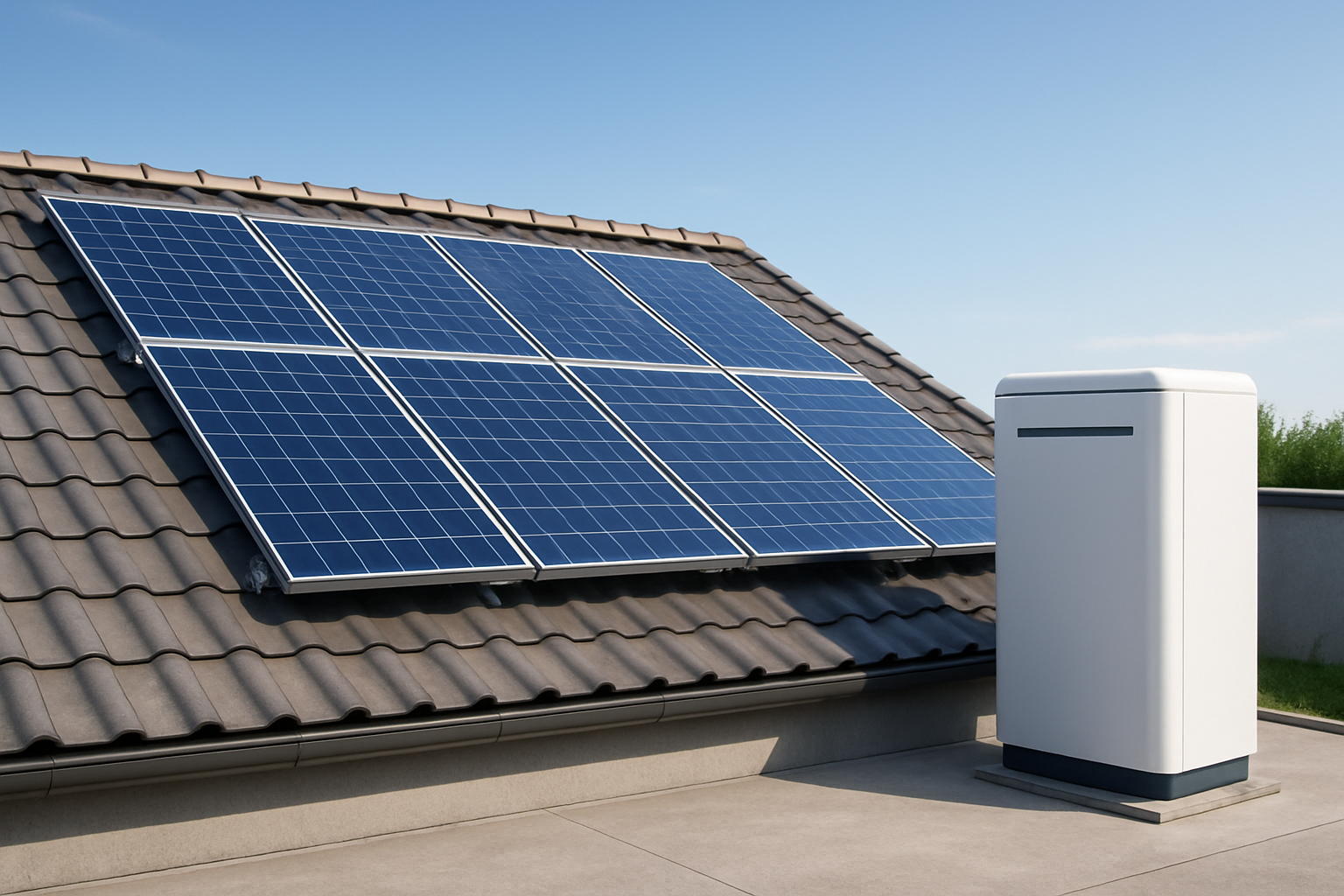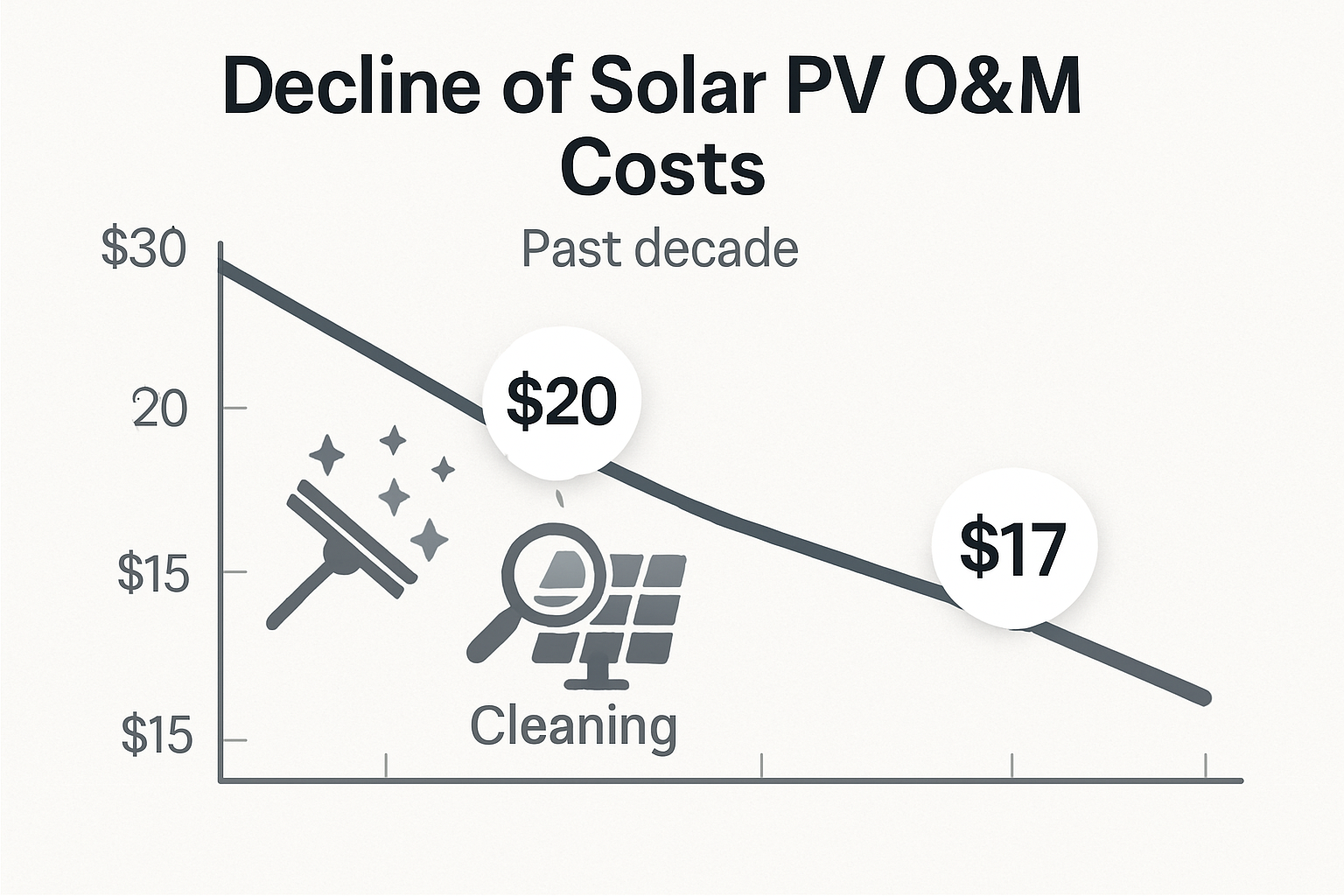Adopting solar power is a significant step toward energy independence and sustainability. You select the panels, calculate your potential savings, and look forward to a lower electricity bill. But the initial purchase and installation are only part of the story. To truly protect your investment, you must look at the ongoing costs and potential risks, specifically rooftop solar insurance and the financial impact of system downtime.
Thinking about these factors from the start ensures your solar energy system remains a valuable asset for its entire lifespan, not a source of unexpected financial strain.
Beyond the Panels: Unpacking the Full Cost of Solar
The price of solar panels and inverters has decreased substantially over the years. This makes solar technology more accessible than ever. Yet, the hardware itself is not the total cost. Non-hardware expenses, often called "soft costs," represent a large portion of the overall investment.
What Are Soft Costs?
Soft costs include everything outside of the physical equipment. This covers permitting, installation labor, interconnection fees, and ongoing maintenance. According to a report from the U.S. Department of Energy, these non-hardware costs can make up a significant percentage of the total price for a residential solar system. As noted in their success story on speeding up solar deployment, these fees can sometimes account for *up to 64% of the total price*. This highlights why a comprehensive budget should account for more than just the panels and inverter.
Maintenance as a Planned Expense
Solar panel maintenance costs are a critical part of the long-term budget. While solar systems are known for their reliability, they are not entirely "set it and forget it." Regular upkeep ensures optimal performance and longevity. This includes professional inspections, cleaning, and potential repairs. Viewing maintenance as a predictable, planned expense rather than a surprise bill is a smarter approach to solar ownership.
The Critical Role of Rooftop Solar Insurance
Your solar energy system is a valuable addition to your property, and like any valuable asset, it requires protection. Many assume their standard homeowner's policy will automatically cover their new solar array, but this is not always the case. Relying on this assumption can lead to costly coverage gaps.

Does Homeowner's Insurance Cover Solar Panels?
In many cases, a standard homeowner's insurance policy can be extended to cover a rooftop solar system, as it's considered a permanent fixture of the home. You must inform your insurance provider about the installation to ensure the coverage is added. This may increase your premium. However, the extent of the coverage can vary greatly. It might protect against common perils like fire or falling trees, but it could have exclusions for specific types of electrical malfunctions or weather events like hail.
Why Specialized Solar Insurance Matters
Specialized rooftop solar insurance offers more comprehensive protection tailored to the unique risks associated with these systems. It often covers:
- Equipment Damage: Protection against a wider range of events, including electrical surges, hail, wind, and even theft or vandalism.
- Liability: Covers potential injuries or property damage caused by your system, for instance, if a panel dislodges during a storm.
- Downtime or Production Loss: Some premium policies offer downtime insurance, which compensates you for the value of the energy your system fails to produce during a covered repair period. This is a crucial feature for protecting your return on investment.
Thinking about insurance isn't just about reacting to problems; it's a fundamental part of a sound operational strategy. The International Renewable Energy Agency (IRENA) categorizes insurance as a key component of Operation & Maintenance (O&M) costs, alongside activities like preventive maintenance and security.
The Unseen Expense: Solar System Downtime
Downtime is any period when your solar system is not generating electricity. While a few hours might seem insignificant, extended outages can quietly eat away at your expected savings and lengthen the payback period of your investment. Understanding the causes and financial impact of downtime is key to mitigating it.
Common Causes of System Downtime
Several factors can cause your system to go offline:
- Inverter Failure: The solar inverter, which converts DC electricity from the panels to usable AC electricity for your home, is one of the most complex components. It is also one of the most common points of failure.
- Panel Damage: Physical damage from severe weather, debris, or unforeseen accidents can take individual panels or entire strings offline.
- Grid Outages: For safety reasons, most grid-tied solar systems are designed to shut down automatically during a power grid outage. Without an energy storage system, your solar panels cannot power your home when the grid is down.
- Wiring or Component Faults: Faulty connections, damaged wiring, or breaker trips can interrupt the flow of power and require professional diagnosis and repair.
Calculating the Financial Impact
The cost of downtime is twofold. First, there is the direct cost of repairs, including parts and labor. Second, there is the opportunity cost—the value of the electricity your system did not produce. For example, if your 10 kW system is down for five days of peak sunshine (averaging 5 sun hours/day), you could lose 250 kWh of production (10 kW * 5 hours * 5 days). At an electricity rate of $0.20/kWh, that’s a $50 loss in savings, on top of any repair bills.
Proactive Strategies to Minimize Downtime and Costs
You can take several steps to minimize hidden solar expenses and protect your system from prolonged downtime. A proactive approach focuses on quality components and diligent maintenance.
Invest in High-Quality, Reliable Components
The quality of your system's core components is your first line of defense against failure. Opting for equipment with a proven track record of reliability can save you significant trouble later.
- Durable Solar Inverters: Choose a solar inverter from a reputable manufacturer known for robust engineering and strong warranty support. A high-quality hybrid inverter not only performs efficiently but is also less prone to the faults that cause downtime.
- Resilient Energy Storage: Integrating an energy storage system (ESS) with high-performance lithium iron phosphate (LiFePO4) batteries is a powerful downtime mitigation tool. These batteries are known for their safety, stability, and long cycle life. In an off-grid solar solution or during a grid outage, a reliable ESS ensures you have continuous power, effectively eliminating downtime related to grid instability.
Embrace a Comprehensive Maintenance Plan
A structured maintenance plan helps you catch small issues before they become big, costly problems. As outlined by energy agencies, a thorough O&M plan covers multiple areas. A study on Renewable Power Generation Costs in 2024 provides a detailed breakdown of what a complete O&M plan involves.
| Category | Activities Included |
|---|---|
| Preventive Maintenance | Scheduled visual inspections, equipment calibration, communication system checks, and sensor cleaning. |
| Corrective Maintenance | Unscheduled repairs of inverters, transformers, and other components not covered by warranty. |
| Panel Cleaning | Regular cleaning to remove dust, dirt, and debris that can hinder performance. |
| Insurance | General liability and property damage insurance to cover unforeseen events. |
| Other | Vegetation management (greenkeeping) and security measures for larger installations. |
Securing Your Energy Future
A rooftop solar system is a powerful tool for achieving greater energy independence and financial savings. To realize its full potential, you need to look beyond the initial installation. By understanding and planning for hidden solar expenses like comprehensive insurance and potential downtime, you protect your investment from the unexpected.
Pairing a proactive mindset with high-quality system components, such as a dependable solar inverter and a robust LiFePO4 battery storage system, creates a resilient and reliable energy solution. This approach ensures your system performs optimally for years, delivering the clean energy and peace of mind you expect.





Leave a comment
All comments are moderated before being published.
This site is protected by hCaptcha and the hCaptcha Privacy Policy and Terms of Service apply.